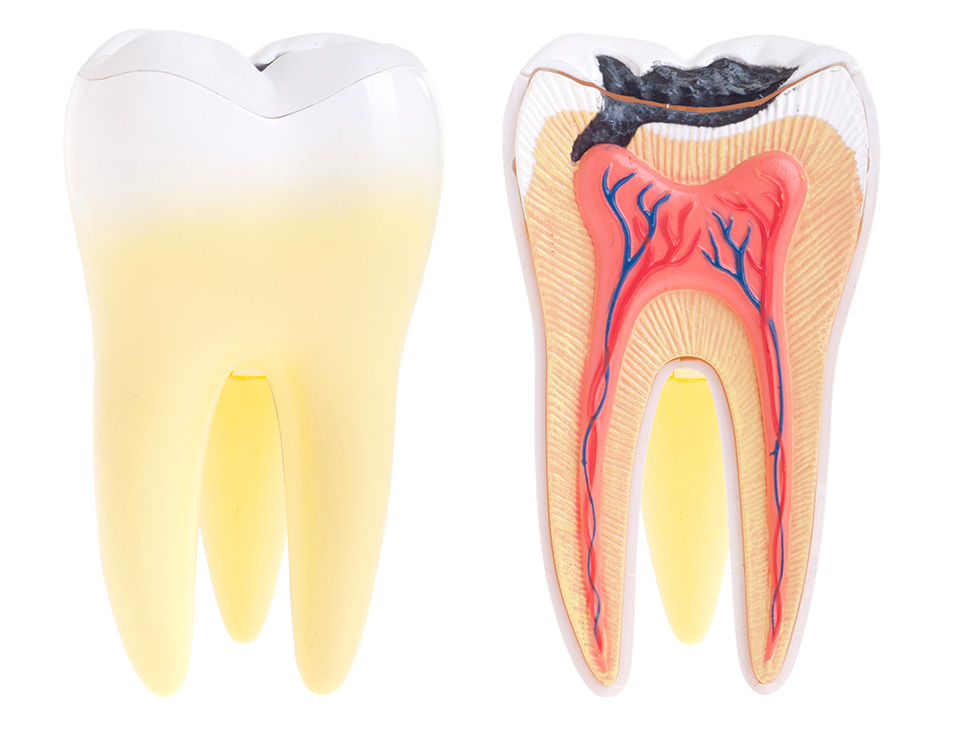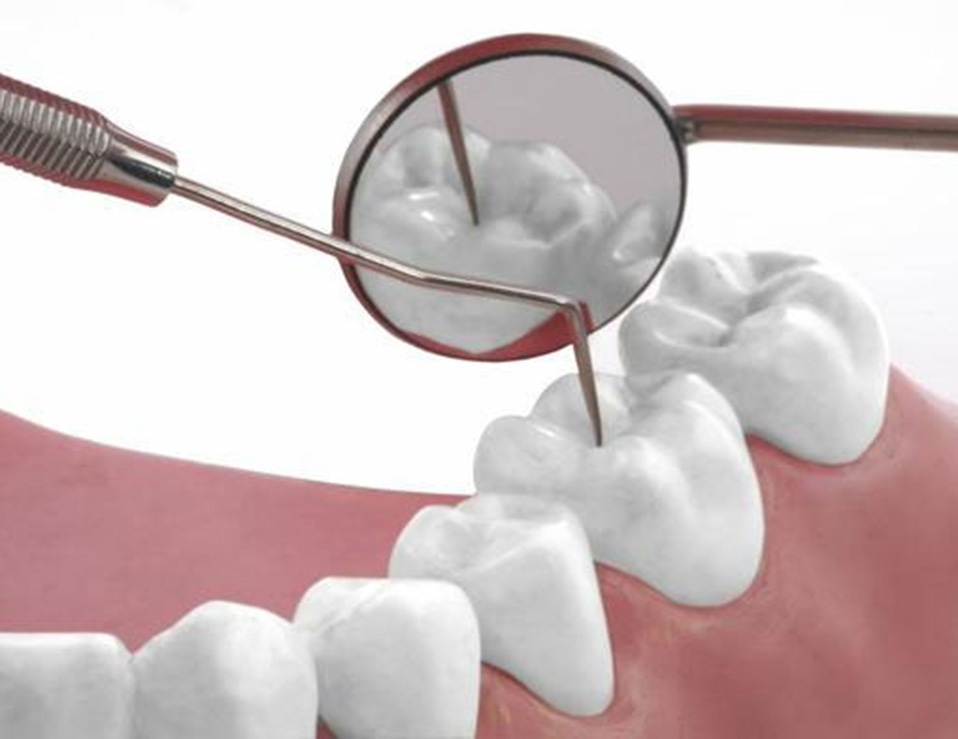CROWN
A crown is a tooth-shaped cover that dentists place over a damaged or decayed tooth, without performing any dental surgeries.
A crown can also join parts of a cracked tooth together or fix a bridge in place.
Some of the crown types used at Farhat Dental clinic are metal/ceramic, gold/ceramic and zirconium crowns.
Dental crowns look just like natural teeth, so no one would notice that your attractive smile is created by your dentist.
ENDODENTICS
1) What is root canal treatment?
Root canal treatment, also known as endodontic, is needed when the blood or nerve supply of the tooth (the pulp) is infected through decay or injury.
2) What is the importance of root canal treatment? If the pulp gets infected, the infection can spread through the root canal system of the tooth, which might cause swelling. If root canal treatment (RCT) is not carried out, the infection will spread and the tooth may need to be taken out.
3) Is root canal treatment hurtful? No. Local anesthesia is applied and the patient will no longer feel any pain during the procedure.
4) How will my tooth look like after treatment|?
In the past, a root filled tooth would often darken after treatment. With today's technology, this does not usually occur anymore. In case any discolouration happens, many techniques can easily restore the natural color back.
5) Can the root canal treatment be repeated?
Root canal treatment is usually very successful. However, if the infection comes back the treatment can be repeated.
6) What is the alternative for having a root canal treatment ?
The alternative is to have the tooth out. Once the pulp is destroyed, it can't heal and it is not recommended to leave an infected tooth in the mouth. Although some people prefer an extraction, it is recommended to treat instead to keep as many natural teeth as possible.
7) Will the tooth be safe after the treatment ?
Yes, but it is better to restore the tooth with a crown to provide it with extra support and strength.
8) what about after care?
Root-treated teeth should be treated just like all other teeth. Patients should clean their teeth at least once a day, preferably with fluoride-rich toothpaste. It is also preferable to cut down on sugary food and consult the dentist for regular check-ups.
COMPOSITE FILLINGS
Composite fillings, or filled resins, consist of a tooth colored mixture that provides good durability and resistance to fractures in small-to-mid size restorations. Compared to the old amalgam, composite requires less tooth removal, and thus a smaller filling. Composites can also be "bonded" or adhesively held in a cavity, which offers a more conservative repair to the tooth.
DENTAL INLAYS AND ONLAYS
Inlays and onlays are similar to composite, yet they are made of ceramic. They restore teeth and provide them with extra strength. The procedure is called an “inlay” when the material is bonded within the center of a tooth. Conversely, an “onlay” is used when the scope of the damage requires inclusion of one or more cusps (points) of the tooth or full coverage of the biting surface.
Some advantages of this dental procedure include:
Teeth with inlays and onlays should be taken care of just like natural teeth. Daily brushing and flossing as well as regular visits to the dentist for examination are recommended.
In complicated cases of tooth decay, dental inlays and onlays can be resorted to, due to their strength, durability, and aesthetic quality. They are also excellent solutions for larger cases of tooth decay.





